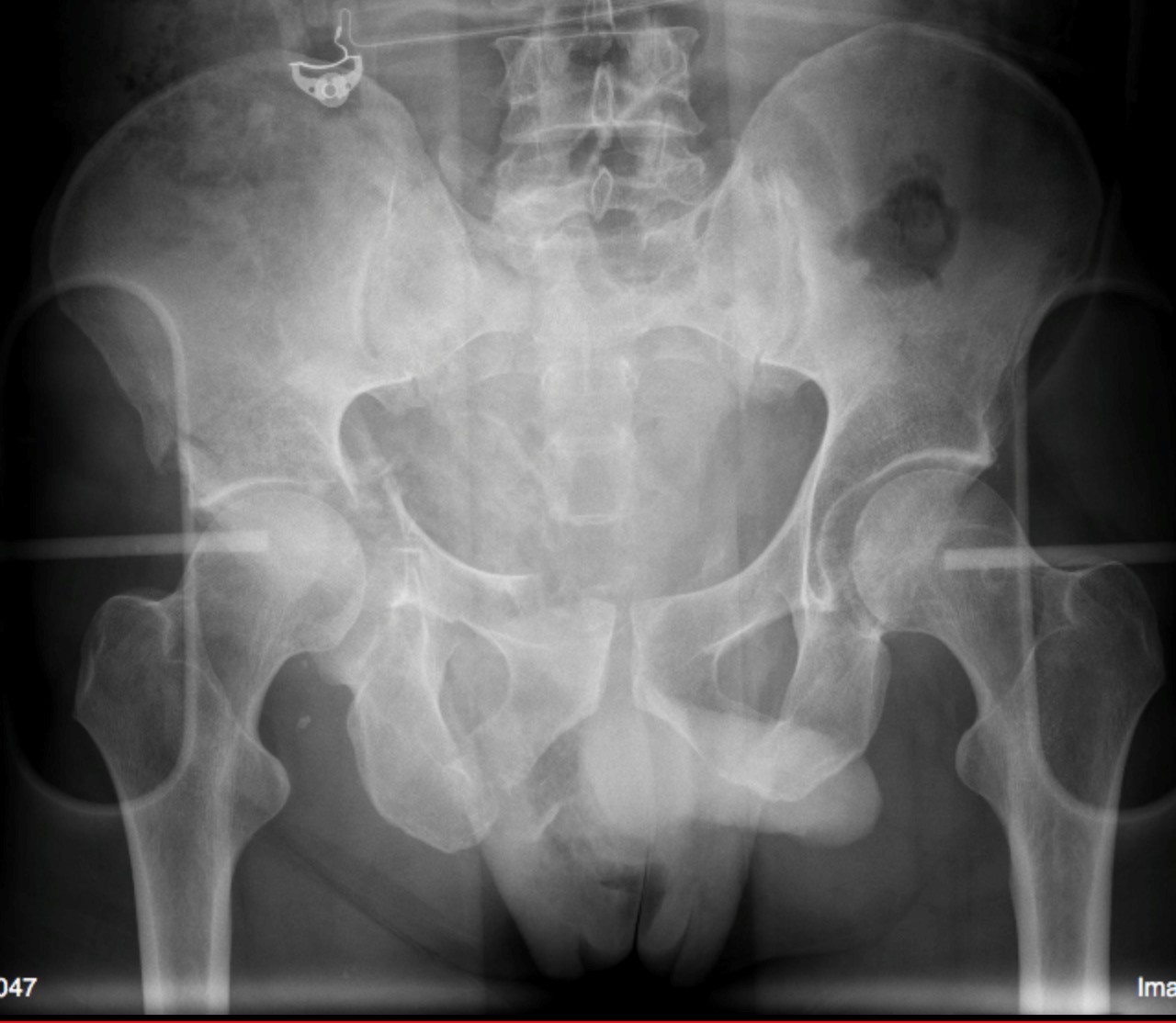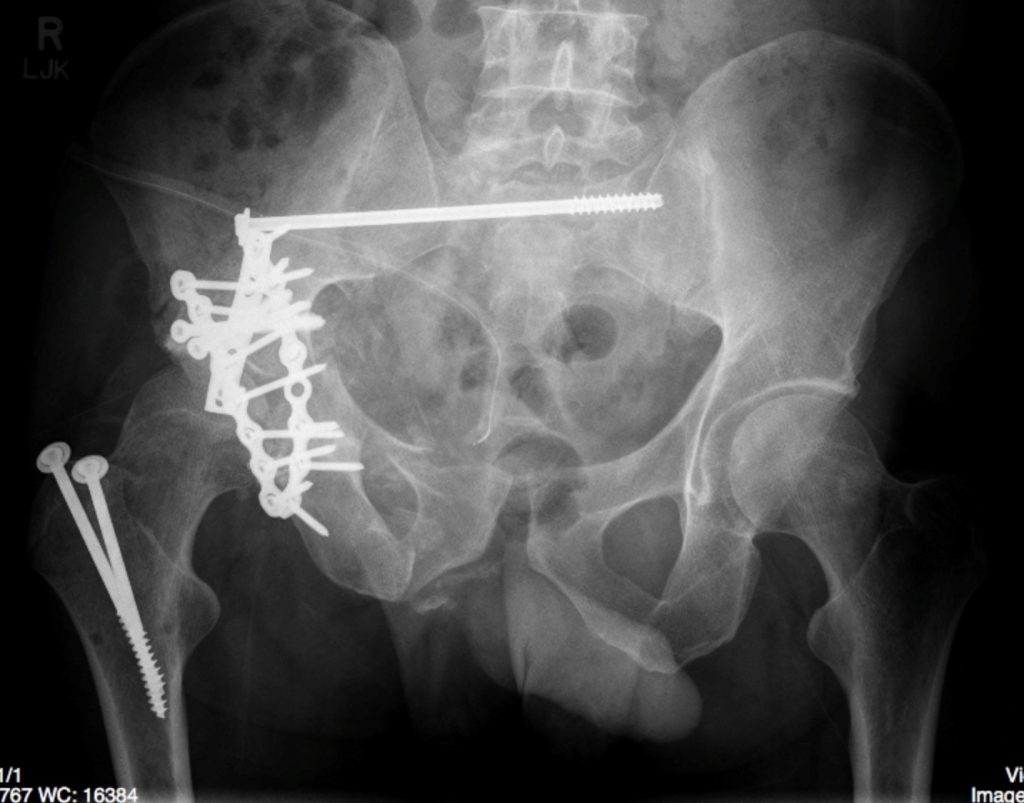Chapter 14 – Musculoskeletal
Pelvic Fracture
ACR – MSK – Acute Hip Pain – Suspected Fracture Pelvic Trauma
Case
Complex pelvic bone fractures
Clinical:
History – This 27 year old male was crushed between two vehicles at a remote northern construction site. The patient required air transportation to the nearest trauma centre with CT. Immediate trauma imaging requires a portable cervical spine, chest and pelvic x-rays.
Symptoms – Major trauma. Unconscious. Intubated.
Physical – There was subcutaneous emphysema of the lower abdomen. There was severe bruising of the pelvis due to the crush injury.
DDx:
Isolated or multiple pelvic bone fractures
SI-joint diastasis
Soft tissue injury
Imaging Recommendation
ACR – MSK – Acute Hip Pain – Suspected Fracture, Variant 1
Given the severity of the injuries, CT of the abdomen and pelvis was also required (See ODIN).


Imaging Assessment
Findings:
X-rays – The pelvic x-ray revealed fractures of the iliac bone, the acetabulum, the inferior and superior pubic rami and possibly the sacrum.
CT scanning was required. The patient required air transportation to the nearest hospital with CT.
CT – The CT revealed abdominal wall gas due to the associated chest injuries. There were multiple fractures of the pelvic bones, including the right sacrum. Right hemi-pelvic hematoma was seen. Orthopedic consultation was made urgently.
Interpretation:
Complex pelvic fractures requiring surgical management.
Diagnosis:
Complex pelvic bone fractures
Discussion:
Severe pelvic fractures are very often associated with a poly-traumatized patient with multiple injuries. Severe pelvic fractures put the patient at risk for pelvic arterial and venous bleeding. This is usually managed with external or surgical fixation of the fractures, but rarely pelvic angiography will be required to control active arterial hemorrhage.
In addition, bladder rupture and male urethral injuries are possible in the setting of the pelvic trauma.
X-ray findings may include:
- Lucent fracture lines in a variety of bones. Extension of these fractures into the hip joints and SI-joints should be assessed for.
- The SI-joints and pubic symphysis may be disrupted. As such, one side of the pelvis may be more cranially or caudally situated due this disruption.
- There may be more than one fracture with significant pelvic deformity.
- There may be significant soft tissue and pelvic tissue swelling due to edema and hematoma.
Management at a tertiary care, Trauma Centre, is imperative.
Attributions
Figure 14.11A X-ray of the pelvis, pre-operative, displaying a variety of pelvic fractures by Dr. Brent Burbridge MD, FRCPC, University Medical Imaging Consultants, College of Medicine, University of Saskatchewan is used under a CC-BY-NC-SA 4.0 license.
Figure 14.11B X-ray of the pelvis, post-operative fixation of pelvic fractures by Dr. Brent Burbridge MD, FRCPC, University Medical Imaging Consultants, College of Medicine, University of Saskatchewan is used under a CC-BY-NC-SA 4.0 license.

